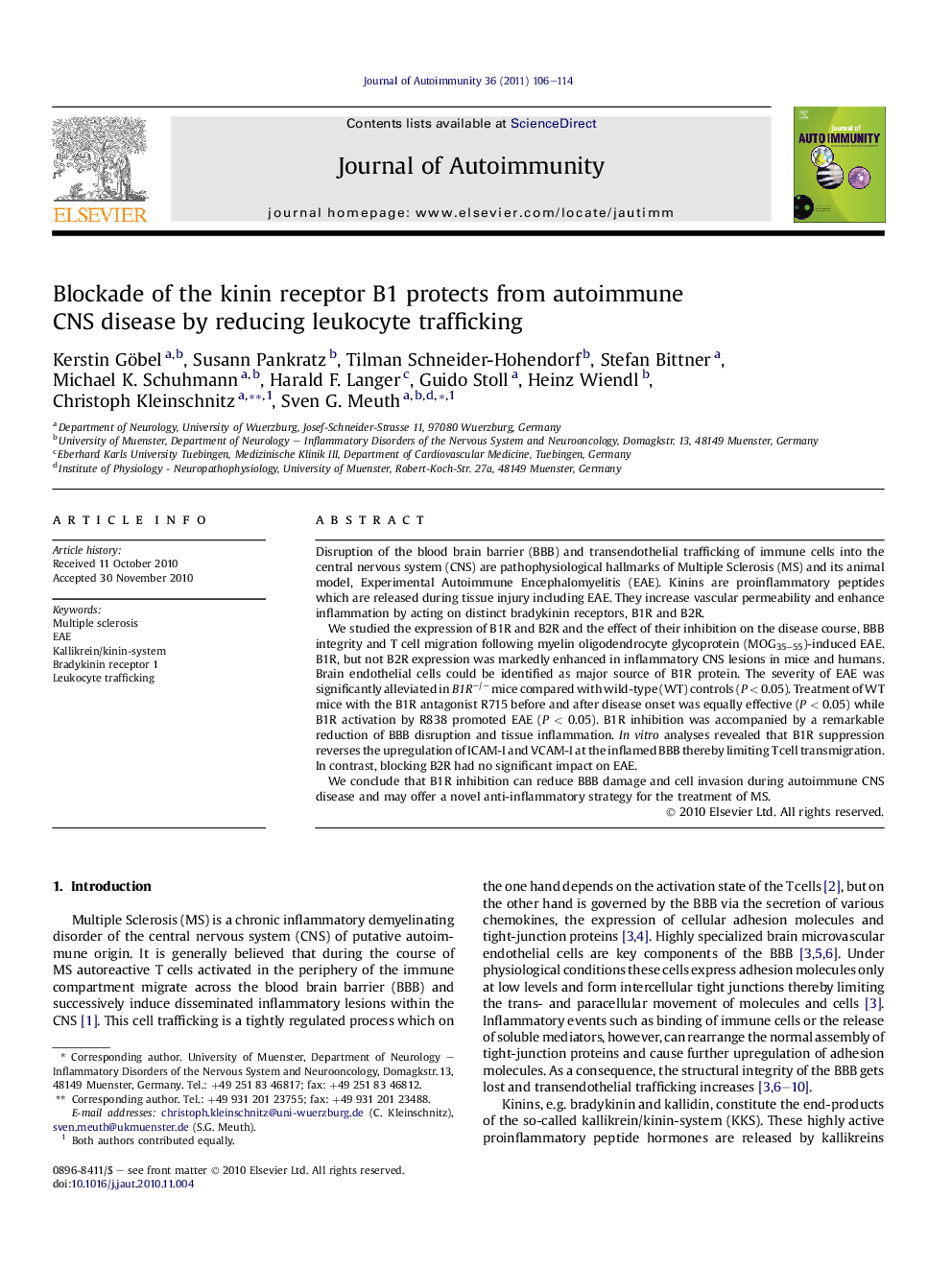| Article ID | Journal | Published Year | Pages | File Type |
|---|---|---|---|---|
| 3368087 | Journal of Autoimmunity | 2011 | 9 Pages |
Disruption of the blood brain barrier (BBB) and transendothelial trafficking of immune cells into the central nervous system (CNS) are pathophysiological hallmarks of Multiple Sclerosis (MS) and its animal model, Experimental Autoimmune Encephalomyelitis (EAE). Kinins are proinflammatory peptides which are released during tissue injury including EAE. They increase vascular permeability and enhance inflammation by acting on distinct bradykinin receptors, B1R and B2R.We studied the expression of B1R and B2R and the effect of their inhibition on the disease course, BBB integrity and T cell migration following myelin oligodendrocyte glycoprotein (MOG35–55)-induced EAE. B1R, but not B2R expression was markedly enhanced in inflammatory CNS lesions in mice and humans. Brain endothelial cells could be identified as major source of B1R protein. The severity of EAE was significantly alleviated in B1R−/− mice compared with wild-type (WT) controls (P < 0.05). Treatment of WT mice with the B1R antagonist R715 before and after disease onset was equally effective (P < 0.05) while B1R activation by R838 promoted EAE (P < 0.05). B1R inhibition was accompanied by a remarkable reduction of BBB disruption and tissue inflammation. In vitro analyses revealed that B1R suppression reverses the upregulation of ICAM-I and VCAM-I at the inflamed BBB thereby limiting T cell transmigration. In contrast, blocking B2R had no significant impact on EAE.We conclude that B1R inhibition can reduce BBB damage and cell invasion during autoimmune CNS disease and may offer a novel anti-inflammatory strategy for the treatment of MS.
